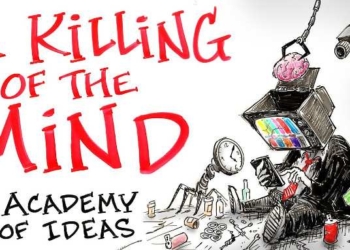Sci-Tech
Harness Your Full Quantum Potential Using the Four Principles of the Quantum Paradigm | Dr. Theresa Bullard
Watch this brilliant presentation by Dr. Theresa Bullard in which describes the four principles of the quantum paradigm that govern...
Read moreIdentify the Problem With Your Graphics Card
A graphics card problem will display an error on your screen, making it difficult to determine the cause of the...
Read moreStrange Signal Detected From The Heart Of Our Galaxy
Scientists are so puzzled by a newly-discovered radio signal that's coming from the galactic center. #deepspace
Read moreThe Science Of Propaganda Is Still Being Developed And Advanced
We live in a profoundly unfree society that is disguised as a free society. Western liberal democracy is just totalitarianism...
Read moreThe Most Powerful Space Telescope Ever Built Will Look Back In Time To the Dark Ages of the Universe
The James Webb Space Telescope was specifically designed to detect the oldest galaxies in the universe. It is the most...
Read moreHow the Mathematics Behind Molecular Interactions Could Help Streamline Pharmaceutical Development
Researchers hope to use new computational models and mathematical frameworks to create a web-based app accessible to the scientific community....
Read more‘Planetary Defense!’ NASA Will Launch November Mission to Deflect ‘Devastating’ Asteroid from Hitting Earth by NUDGING It with A Spacecraft, Agency Says
NASA's mission to deflect an asteroid using a spacecraft is targeting a late November launch. The DART spacecraft will head...
Read moreKevin Dalby, UT Austin Professor, Discusses DNA Testing — A Promising Weapon in the War on Cancer
Dr. Kevin Dalby explains some of the ways in which DNA testing is proving to be a promising weapon in...
Read moreThe Romantic Side of Electromagnetism
Not even “science” can explain away the amazing things that love can do, or the seemingly unexplained “abilities” that people...
Read moreWhat Is the Difference Between a Magnetometer, Gaussmeter, and Teslameter?
A magnetometer, a gaussmeter, and a teslameter may seem the same. However, these electrical devices have subtle yet significant differences...
Read moreThe Schumann Resonance And Gaia: Connection Between The Brain And The Planet
Beyond the “subtle” energies, almost spiritual or astral, there is a dimension of energies that are well known and typified...
Read moreSpaceX Inspiration4 Mission Will Send 4 People with Minimal Training into Orbit – and Bring Space Tourism Closer to Reality
Four people – none of them trained astronauts – are scheduled to launch into orbit aboard a SpaceX Dragon capsule...
Read more5 Reasons Video Games Should Be More Widely Used in School
Here are five reasons why Andre Thomas, Director - LIVE lab and Associate Professor of the Practice, Texas A&M University...
Read moreMASS PSYCHOSIS – How an Entire Population Becomes MENTALLY ILL and Submits to Totalitarian Control
This video explores the most dangerous of all psychic epidemics: mass psychosis. Mass psychosis is an epidemic of madness and...
Read moreDance and Movement Therapy Holds Promise For Treating Anxiety and Depression, as well as Deeper Psychological Wounds
Dance and movement therapy not only holds promise for the treatment of trauma, anxiety, and depression but can also contribute...
Read more















